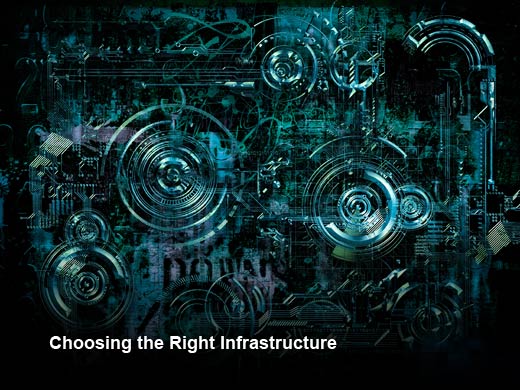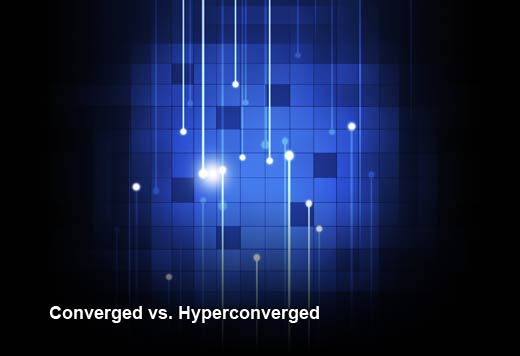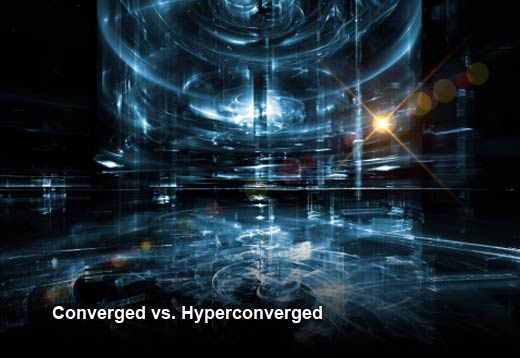It’s no big news that enterprise data center environments are in the midst of multiple transformations. Intersecting trends like mobile, Big Data, advanced virtualization and cloud computing have caused many IT organizations to rethink how they can deliver their IT services faster, better and more affordably to both internal and external users.
As part of these efforts, many organizations have chosen to redefine their data center’s traditional hardware “stack” of underlying compute, network and storage resources. This involves the increasing use of converged infrastructures (CI) and hyperconverged infrastructures (HCI).
While some organizations already know which infrastructure might be best for their environment, many others have questions about how best to proceed. How do the two types of converged infrastructures differ? When does it make sense to use one type over the other? Are there situations where you benefit from using both CI and HCI at the same time?
In this slideshow, Jason Anderson, chief architect at Datalink Corporation, takes a closer look at the two infrastructions and how organizations should go about choosing the one that’s best for their environment.
About the author: Jason Anderson is the chief architect at Datalink Corporation, a complete provider of data center services and solutions. In this role, he consults with Datalink’s strategic customers on their data center strategies, helping them develop solution architectures that will drive efficiencies and competitive advantages through technology in their organizations. He also leads Datalink’s technical architecture team in researching emerging technologies as well as making recommendations and developing best practices.
Choosing the Right Infrastructure
Click through for more on the differences between converged and hyperconverged infrastructures and how organizations should go about choosing the one best for their environment, as identified by Jason Anderson, chief architect at Datalink Corporation.
Converged vs. Hyperconverged
Converged vs. Hyperconverged: Can You Tell the Difference?
If you asked 10 vendors to explain the difference between converged and hyperconverged solutions, you might get 10 different answers. When Unitrends is asked about the difference, they like to keep it simple. Just ask, “Where is the storage?”
Both converged and hyperconverged infrastructures have these components: compute, server virtualization, networking and storage. Converged infrastructures, however, have a dedicated, external storage array responsible for running the storage software and for holding the durable copy of all data. In contrast, hyperconverged solutions remove the external storage array from the equation. Instead, they move all storage software and all physical storage onto the compute nodes themselves within the system. Over time, this line will blur, but this is the easiest definition today.
Converged vs. Hyperconverged
Many hyperconverged solutions run on commodity hardware where more boxes (or nodes) can be added later for modular, horizontal scaling of one or more infrastructure layers. In the case of both converged and hyperconverged, some form of unified management software is often used to simplify and automate operations and maintenance across all layers of the stack.
Such solutions come in many forms. They may be offered in the form of a multivendor-approved and/or single SKU reference architecture (tuned with specific application environments in mind), an appliance, or even as a software-only option.
How Do You Decide?
How Do You Decide? (Hint: It All Starts with the Workload)
When customers ask Unitrends staff to describe the benefits of using one infrastructure or platform over the other, the response often boils down to, “It depends on your workload.”
Customers often requisition IT equipment based on the amount of storage or compute an application requires. They are not as accustomed to starting first with a workload-centric assessment. This type of assessment is especially important when deciding on a converged or hyperconverged infrastructure.
How Do You Decide?
High-intensity workloads that require high throughput or very high IOPS tend to do better in converged environments. This might include very high-end, transaction-processing or order-entry databases, core ERP systems, data warehouse environments or analytics. For these, fine-tuning each underlying IT resource is critical. Many are mission-critical workloads that require a lot of IT resources. They may have specific budget allocations and well-defined specifications for the necessary amount of compute, network and storage resources. In these cases, a converged infrastructure can offer the right amount of storage, compute and network resources. It also lets you scale up the amount of storage, network or compute, separately or together.
How Do You Decide?
In comparison to high-intensity workloads, many data center environments must also support a large number of “average” workloads. These are application workloads that have more modest resource consumption. They are a good fit for hyperconverged infrastructures. Such infrastructures allow you to consume IT resources in a smaller, bite-sized format. They don’t require the strictest up-front specifications (or high-acquisition costs) for large and exact amounts of storage, compute or network resources. This is one reason hyperconverged infrastructures also work well with application development and testing environments or with new application pilots, such as virtual desktops. An initial, hyperconverged system might support a few dozen workloads, then allow you to grow the infrastructure more slowly by acquiring bite-sized pieces as workloads increase.
When It Makes Sense to Use Both
Many medium to large enterprise environments have a mixture of workloads in operation at any given time. For these, it’s common to have mission-critical workloads with high throughput needs as well as a mix of average workloads. IT purchasing managers may find converged infrastructures for mission-critical workloads easier to acquire since they are often funded by a specific business unit, whereas other workloads do not have specific budgets but still fall under the domain of IT and its general fund for “keeping the lights on.” Many of these will fit well with a hyperconverged system.
When It Makes Sense to Use Both
Whether your organization ultimately uses converged, hyperconverged or both really comes back to your workload requirements. Where Unitrends often designs and recommends converged infrastructure as the most cost-effective approach is for mission-critical applications that already exist in the environment and that exhibit a well-known utilization of the infrastructure. Where they add hyperconverged infrastructures into the same customer base is to help them adopt an agile, cost-effective infrastructure for future workloads whose utilization needs they can’t really plan in advance.
Staying within a workload-centric view allows the organization to decide the right underlying IT platform for each workload. This workload-focused approach allows an organization to choose from not only converged and hyperconverged infrastructures, but between on-premises environments, public cloud services and hybrid cloud as well.










